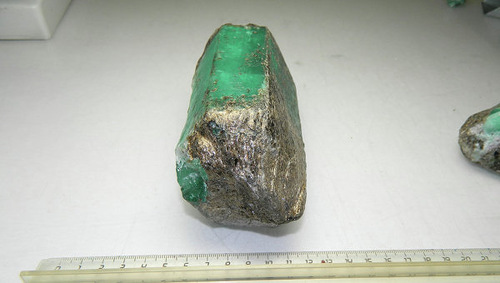Divinely beautiful Russian Malachite
Russian Malachite
A copper carbonate hydroxide mineral, also a semi-precious stone, malachite has an unusual, magnetic energy. It is impossible to look away from the jewelry or interior product of malachite. Originally, very rich deposits of malachite were in the Urals of Russia. And the first place belonged to Mednorudyansky mine (near Nizhny Tagil), then Gumeshevsky. It is here extracted a huge chunk of malachite, weighing nearly half tons. Now it is in the Mining Institute. Meanwhile, Ural malachite was detected in 1635, and in the 19th century. The biggest malachite, weighing 250 tons, was discovered in 1835, and in 1913 found a lump weighing more than 100 tons. The solid mass of dense malachite went to jewelry, and some grains dispersed in the rock – so-called earthy malachite. Besides, from small clusters of pure malachite used to produce high-quality green paint, “malachite green”.
Traditionally, before the revolution, people in Yekaterinburg and Nizhny Tagil painted roofs of houses in beautiful blue-green color. However, the wide use of it as a jewelry stone began only in the late 18th century. It began when huge malachite monoliths were found in Gumeshevsky mine.
Currently, there are deposits of malachite in Africa – Republic of Congo, Zambia, Namibia, Mexico, Australia (Queensland), United States (Tennessee, Arizona), in Western Europe, it is in Chessy (near Lyon), in Cornwall, Retsbanii, Harz, etc. The fate of any large deposit of malachite is the same: first, large pieces are mined, of which are made vases, desk sets, jewelry boxes, then the size of these pieces are gradually reduced, and stones of malachite are basically inserted into pendants, brooches, rings, earrings and other fine jewelry. After that malachite completely exhausted, as it happened with the Urals.
Beautiful Sterling Silver Egg by the House of Faberge, set with diamond shaped malachite stones. Exterior has a gold wash rose design. Interior reveals a butterfly with colorful wings. Includes sterling base. Base also set with diamond shaped malachite stones. Dated 1977. Pre-Sale estimate $800-$1200.
Russian Romanov dynasty really made malachite synonymous with outlandish luxury. High quality malachite, discovered in 1635 in the foothills of the Urals, had become very fashionable for jewelry by 1820 and was frequently paired with gold and diamonds. In 1835, a malachite boulder of the highest quality was discovered that would take 21 years to unearth and bring to the surface.
Slabs from this 260-ton gem were used to adorn the interior of two Russian palaces; creating malachite pillars, columns and encased walls. This same boulder also supplied enough malachite to encase eight of the ten huge Corinthian columns that support a two-hundred foot tall gilded altar in St. Isaac’s Cathedral in St. Petersburg, Russia.
Yusupov Palace in St. Petersburg is considered one of the most beautiful palaces of Russia. It was built in the mid 18th century (architect Valen-Delamott), and belonged to various noble lords, close to the throne. Visitors traveling through the halls get into a tour of the various countries and periods: Renaissance, Baroque, Turkish style, Classicism and Empire ….
Superb home theater of Yusupov. The theater was built on the basic canons of construction of opera halls, and its small size creates a sensation of being inside a precious gilded casket.
Beautiful bronze gilded jardiniere from exclusive collection of Belgian company Heuvelmans Interiors, made by artisans using hand cut crystals, semi-precious stones such as lapis lazuli, malachite and amethyst, enriched with hand chiseled 24K gold plated bronzes.
Glorified in Russian folklore, malachite is a truly national stone. Russian writer Pavel Petrovich Bazhov (1879 – 1950) wrote a collection of tales about malachite “Malachite Box” (1939), based on Ural folklore and published in the Soviet Union in 1939. In 1944, the translation of the book into English was published in New York and London. Later Sergei Prokofiev created the ballet The Tale of the Stone Flower based on one of the tales.
Russian Malachite

Louis XV style malachite low table with carved gilt-wood legs and gallery. The malachite skirt is dressed with gilt metal mounts and the top is centered by a malachite floral design

Circa 20th Century. Russian Imperial Style Figural Gilt-Bronze and Malachite Mounted Table de Milieu, with figures of winged lions, acanthus leave and wreaths. From the exclusive collection of Belgian company Heuvelmans Interiors

Pair of Empire gilt bronze and malachite tazze made by the preeminent bronzier Pierre-Philippe Thomire and signed Thomire à Paris date circa 1811

Сreated by older brother of Karl Briullov, Alexander. The most beautiful room in the Winter Palace, Malachite room
sources
heuvelmans-interiors.com
liveinternet.ru/users/4733972






































